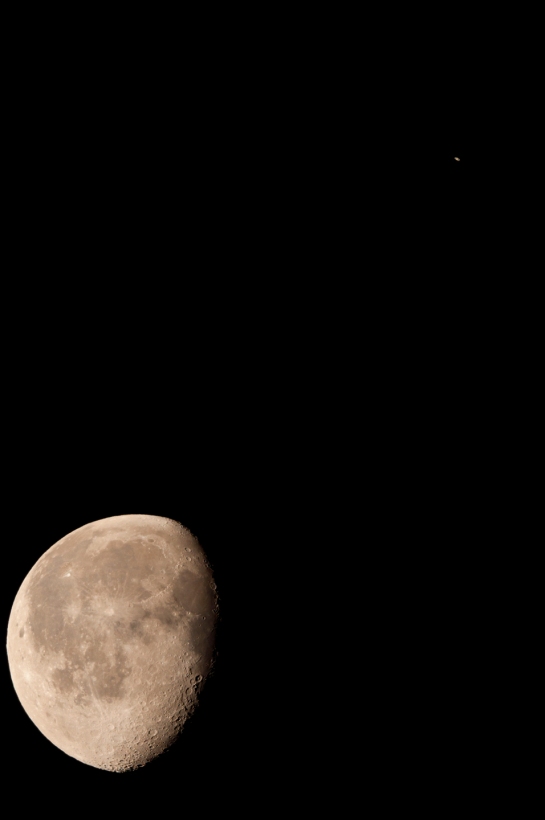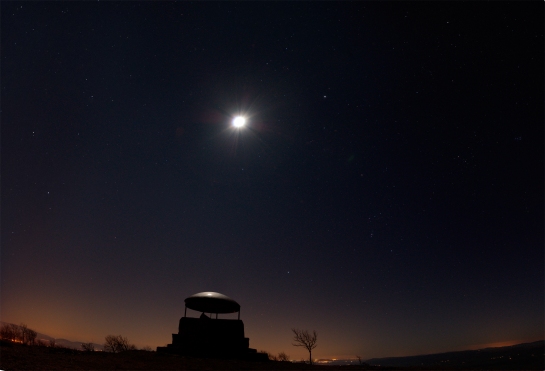The chart said these would be due south at 3.30am on 21 March, elevated 18° above the horizon. A quick check the previous evening showed that the gap between the tree and the neighbour’s house, viewed across the top of my shed, would just give me an unobstructed view.
I was still awake at 1am, kept getting up to see whether the clouds had cleared, and was surprised when the alarm woke me at 3.00. I opened the west-facing bedroom window to stick my head out, and saw clear sky to the south – with the Moon exactly as predicted.
Set up the tripod, mount the new Altair Wave 115 – with the Nikon attached as if to an 805mm f/7 lens. After years of SLR photography, I still think in terms of focal length rather than objective lens diameter. The field of view with this combination is 1.68° x 1.12°, perfect for this shot as Saturn was just 1.2° from the Moon.
Focusing was very easy with the Bahtinov mask and the dual speed focuser, especially with the Nikon’s LiveView screen zoomed right in on Saturn. Even though Saturn is a ringed disk rather than a point of light, the changing shape of the view through the mask was obvious.
At ISO 400, trial and error gave 1/250th of a second exposure for the Moon, and 1/30th for Saturn. By 4am I was quickly layering these together in Photoshop…
…and back in bed at 4.15, just as the clouds returned.

